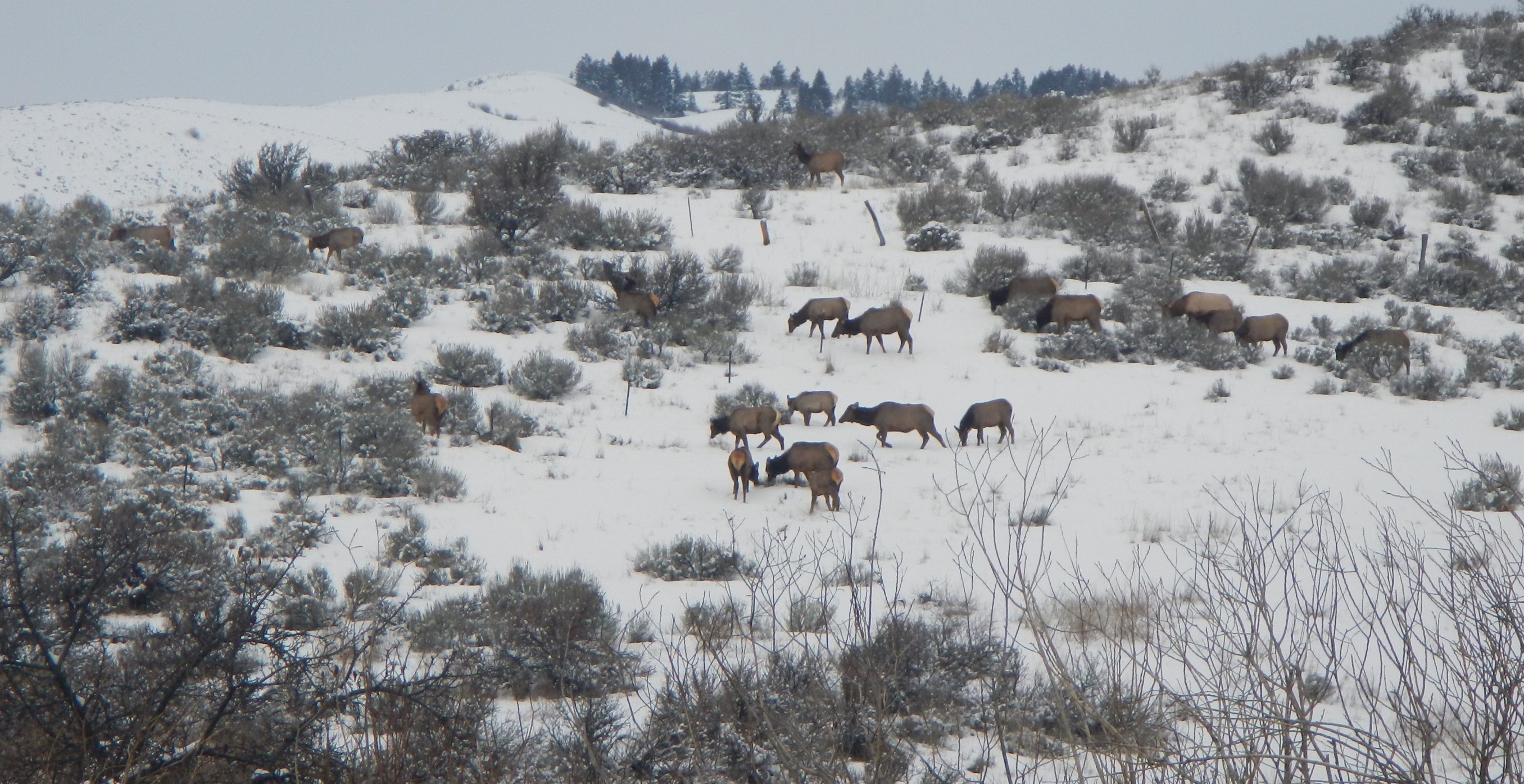For centuries deer and elk migrated from their summer range in the Sawtooth Mountains to their winter ranges in the Boise River Valley. Many of these herds dispersed downriver as far as the Deer Flat area near Nampa, Idaho. Over time, an increase in development and human activity along the river pushed these big game species out of these preferred wintering areas and into the unsettled foothills of Boise. As the human population expanded beyond the city limits and development began in the foothills, biologists voiced concern over the potential loss of critical mule deer winter range and the inevitable loss of the herds themselves.
In 1943, over 2,000 acres of land near the mouth of Mores Creek was purchased by Fish and Game to provide winter range for mule deer. This land acquisition was the first of many that created the Boise River WMA, which began the process of permanently protecting critical winter range used by big game. Most recently, Fish and Game took ownership of 5,533 acres 20 miles SE of Boise in the Mayfield Area (link to article posted Feb 14, 2024). This property, called the Cornell Segment, protects additional winter range in the face of increasing human development. Today, over 41,500 acres of publicly owned lands are managed for wildlife habitat and hunting access as part of Fish and Game’s ownership and agreements with the Army Corps of Engineers, U.S. Forest Service, Bureau of Land Management, and Idaho Fish and Wildlife Foundation.
The WMA is the primary winter range for deer and elk in Big Game Unit 39. It is estimated that 5,000 to 8,000 mule deer and 1,800 elk winter on the WMA each year. Black bear, mountain lion, and a small population of pronghorn are also found on the property. In addition, the WMA supports populations of upland game birds including chukar, gray partridge, California quail, dusky grouse, ruffed grouse, and mourning doves.
State Highway 21 and Warm Springs Avenue bisect the WMA and the critical big game winter range it provides. Collisions between big game and motor vehicles occur frequently on these roadways. The increase in traffic on these roads can seriously impact wildlife movement and distribution, and Fish and Game is working with other agencies to find solutions for this chronic issue. Mitigation efforts include installing wildlife-exclusion fencing, a highway underpass, a newly constructed overpass, and also public education.
The rapidly expanding human population of the Treasure Valley has significantly increased the demand for hunting opportunities, wildlife-oriented recreation, and other outdoor activities, such as hiking, mountain biking, paragliding, and dog walking on the WMA. In order to accommodate the intensity of these public activities and still provide conditions that will ensure the long-term health of southwest Idaho’s largest migratory mule deer herd, certain restrictions have been established on the WMA.


